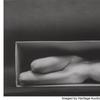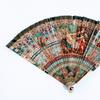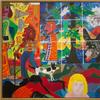browngrotta arts presents California Dreamin’
- WILTON, Connecticut
- /
- May 21, 2020
browngrotta arts is pleased to announce California Dreamin’ - an exclusive online exhibition highlighting the seminal role of the West Coast in the contemporary fiber art movement, and the significant role of California artists in browngrotta arts’ exhibition history, on view from May 11 - 31 on Artsy.
A forerunner in the field, browngrotta arts has been dedicated to researching, documenting and raising awareness of Modern Craft through exhibitions and collectively recording the narrative of the movement through print catalogs for over 30 years, contributing in no small feat to preserving the continuity of the field.
California Dreamin’ highlights seven artists — Ed Rossbach, Katherine Westphal, Marion Hildebrandt, Judy Mulford, Deborah Valoma, Adela Akers and Sylvia Seventy -- who were the subject of three published catalogs: Ed Rossbach and Katherine Westphal (Vol 6, 1993); Three California Basketmakers: Marion Hildebrandt Judy Mulford Deborah Valoma (Vol 20, 1998); Adela Akers and Sylvia Seventy (Vol 26, 2000). These artists continue to gain importance with the renewed recognition and reappraisal of Modern Craft.
When browngrotta arts founders, Tom Grotta and Rhonda Brown began promoting artists in the late 1980s they discovered two important facts about the field. First, at that time, before digital printing, galleries and museums rarely had the budget to document their exhibitions in a catalog or book. Second, on the rare occasions when catalogs of fiber art were prepared, the works were photographed like paintings: two lights at 45-degree angles, dimension and detail obscured.
Grotta set out with the intention to resolve this disparity and began an annual cataloging program recording exhibitions, artists, and works through photography that specifically captured the tactile and haptic characteristics of fiber and craft art. While the first catalogs were modest, black-and-white pamphlets, Grotta photographed the work with reference to scale and shape from the outset, and in the case of fiber art, a sensitivity to conveying the work’s organic and haptic qualities and unique materials. This approach allowed for an immersive experience of the works, one that extended beyond the temporal and geographic limitations of the exhibitions.
Exhibition Highlights
Ed Rossbach (1914 - 2002) and his wife Katherine Westphal (1919-2018), who were featured in a dual show and accompanying catalog, Ed Rossbach and Katherine Westphal (Vol 6, 1993), both challenged traditional forms and media of textile making. The catalog prepared by browngrotta arts presented two covers, intentionally giving the artists equal attention that Westphal deserved, but didn’t always receive.
Rossbach became fascinated by indigenous textile processes and the use of found materials. Noted for creating three-dimensional, structural forms from unexpected, humble materials including plastic, reeds, newspaper, stapled cardboard, twigs, Rossbach inspired a renaissance in basketry and vessel forms.
Westphal was well known for her surface treatments on fabrics and spurred experiments of her own. In the late 60s she used photocopy machines to make images for her art. In the 1970s, in addition to drawings and making baskets, she began creating wearable art. According to Glenn Adamson, former director of the Museum of Arts and Design, it was a genre Westphal essentially invented. Few were worn, most were hung on the wall like paintings. Her work displayed wide-ranging, autobiographical themes, arising from her travels — Native American art from trips through the Southwest, cracked Greek pots viewed on a trip to the Met, portraits of geishas after visiting Japan.
In Adela Akers and Sylvia Seventy (Vol 26, 2000), Adela Akers' (b. 1933) tapestries reflect her interest in coded messages and record keeping of memories. In this volume, her tapestries are paired with Sylvia Seventy's (b. 1947) pottery forms made of paper, feathers, beads and other found objects – embellished works that also reflect the tracings of time.
Inspired by African and South American textiles, Akers creates woven compositions of simple geometric shapes, bands, zigzags and checks. Many of her works incorporate meticulously measured and strips of metal cut from recycled California wine bottles, creating an image that changes when directly or indirectly lit. She frequently employs horsehair into her weavings, adding texture and dimensionality. Akers’ work has changed over time in scale, material and construction. Some themes, however, continually reappear, notably the use of line, in conjunction with light, to create works that transform as the viewer changes perspective.
In the 70s, Seventy was undertaking experiments in paper making, inspired in part by her studies of the art of the Pomo Indians. Her vessels feature an accretion of items, compositions of beads, feathers, fish hooks, googly eyes, hand prints, and buttons.
In Three California Basketmakers: Marion Hildebrandt Judy Mulford Deborah Valoma (Vol 20, 1998), browngrotta arts focused on three California artists who took very different approaches to their art. Marion Hildebrandt (1925 - 2011) gathered native flora and fauna for her baskets, Judy Mulford (b. 1938) surrounds gourds with knotless netting and integrates photographic images, drawings, words, polymer figures and found objects. Deborah Valoma (b. 1955) creates vessels of woven copper and of waxed linen and wire.
Hildebrandt lived in Napa Valley where she gathered most of the plant material used in her baskets. "My basketmaking reflects a longtime interest and study of native California flora and fauna. It is still possible to find plants here that were used by basketmakers 4000 years ago.” Hildebrandt employed the same materials that Native Americans used when they inhabited the area, and although she did not attempt to replicate their baskets, she shared their similar appreciation for the natural materials that surround us.
Farther down the California coast, Mulford creates narrative sculpture and baskets of gourds. She studied the fiber arts of Micronesia and in the 70s was one of a group of women to work on Judy Chicago’s The Dinner Party. Each of her works, she says, “becomes a container of conscious and unconscious thoughts and feelings, a nest, a womb, a secret, surprise or a giggle. And always, a feeling of being in touch with my female ancestral beginnings.” Her sculptures integrate photo images, drawings, script, buttons and small figures. The gourds are surrounded by knotless netting — an ancient looping technique — symbolic because it is also a buttonhole stitch historically rooted in the home.”
A creator of both textiles and sculpture, Valoma, credits numerous influences for her work. "I first learned to knit in Jerusalem from a Polish refugee of the Holocaust. I learned to stitch lace from my grandmother, descendant of Armenian survivors of the Turkish massacres. I learned to twine basketry from one of the few living masters of Native American basketweaving in California. These dedicated women tenaciously pass the threads of survival forward." Using hand-construction techniques and cutting-edge digital weaving technology, her work hugs the edges of traditional practice. She upholds traditional customs and at the same time, unravels long-held stereotypes. Valoma believes that students must locate themselves within historical lineages in order to understand the historical terrain they walk (and sometimes trip) through daily.
California Dreamin’ is on view online on Artsy - www.artsy.net/show/browngrotta-arts-california-dreamin
All photos by Tom Grotta, courtesy of browngrotta arts. Not to be published without prior permission.
Contact:
Ryan UrciaSTATE PR
6467142520
browngrotta@statepr.com
276 Ridgefield Road
Wilton, Connecticut
art@browngrotta.com
2038340623
http://www.browngrotta.com














31100x100_c.jpg)

